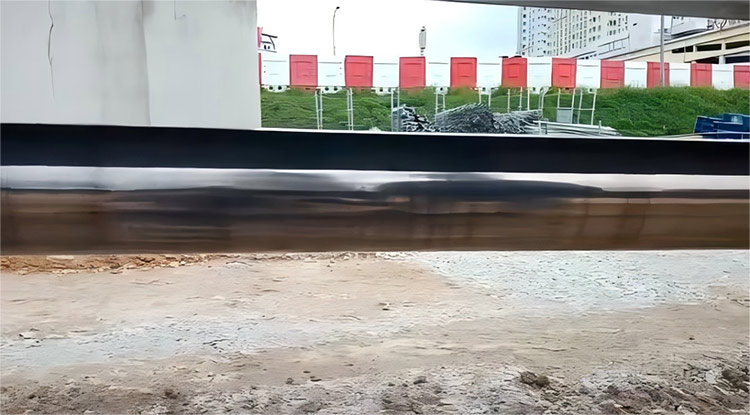- English
- Español
- Português
- русский
- Français
- 日本語
- Deutsch
- tiếng Việt
- Italiano
- Nederlands
- ภาษาไทย
- Polski
- 한국어
- Svenska
- magyar
- Malay
- বাংলা ভাষার
- Dansk
- Suomi
- हिन्दी
- Pilipino
- Türkçe
- Gaeilge
- العربية
- Indonesia
- Norsk
- تمل
- český
- ελληνικά
- український
- Javanese
- فارسی
- தமிழ்
- తెలుగు
- नेपाली
- Burmese
- български
- ລາວ
- Latine
- Қазақша
- Euskal
- Azərbaycan
- Slovenský jazyk
- Македонски
- Lietuvos
- Eesti Keel
- Română
- Slovenski
- मराठी
- Srpski језик
Analysis of Causes of Hydraulic Cylinder Piston Rod Discoloration
2025-08-15
Introduce
During the operation or maintenance of hydraulic cylinders, abnormal discoloration is frequently observed on the piston rod surface. This discoloration typically appears black, forming a sharp contrast with the original silvery-white surface of the piston rod. This article systematically analyzes the causes of this discoloration phenomenon and proposes effective improvement solutions.

1. Problem Description
The surface of the hydraulic cylinder piston rod has lost its metallic luster and turned black. The discoloration is uneven and cannot be removed with toilet paper, but can be scraped off. During on-site repair, we polished it with abrasive wax used for automotive paint repair, which worked very well. However, this repair is only a temporary solution.
The blackening starts at the buffer ring when the cylinder is fully retracted and ends at the buffer ring when it is fully extended.
2. Cause Analysis
l This is caused by lead in the oil-free bearing or additives in the hydraulic oil adhering to the piston rod surface at high temperatures.
l Based on the extent of the blackening and the substances the piston rod comes into contact with during movement, the blackening material likely originates from the buffer ring and the hydraulic oil.
l Analysis of the blackened portion of the piston rod revealed that the two substances are primarily composed of C, O, and H, and that they degrade and decompose at high temperatures, releasing C and O. Thermogravimetric analysis of the hydraulic oil and buffer rings revealed that the hydraulic oil generally degrades and decomposes at temperatures around 200°C, while the buffer ring degrades and decomposes at temperatures above 260°C. This suggests that during prolonged and frequent piston rod movement, heat generated by friction between the buffer ring and the piston rod accumulates in the buffer ring. When the local temperature exceeds the hydraulic oil degradation temperature, the oil film on the piston rod degrades under the high temperature, releasing C and O elements that adhere to the piston rod surface, forming a blackened film. Furthermore, the majority of the pressure generated during hydraulic cylinder extension is borne by the HBY buffer ring. This pressure on the seal is transmitted to the HBY retaining ring, increasing friction between the retaining ring and the piston rod body, exacerbating frictional heating and further increasing the risk of blackening.
3. Improvement Plan
l Replace the hydraulic oil to raise the decomposition temperature of the hydraulic oil; in particular, avoid mixing hydraulic oils of different brands.
l The original HBY retaining ring was made of 12NM polyamide resin with a hardness of Rockwell R 123. This material was replaced with 49YF polytetrafluoroethylene resin with a hardness of Durometer D 70. 49YF is significantly lower in hardness than 12NM, reducing frictional heat generation and lowering local temperatures. However, this improvement also carries certain risks: the reduced hardness of the retaining ring reduces its high-pressure resistance and can lead to extrusion after long-term use. The hydraulic cylinder after the improvement has shown significantly less blackening during subsequent use.
Summary
The blackening of hydraulic cylinder piston rods results from combined effects of hydraulic oil degradation (releasing carbon/oxygen at ~200°C) and friction-induced heat from HBY retaining rings. Replacing the original R123-hardness polyamide ring with softer D70 PTFE (49YF) significantly reduced blackening, though with potential long-term extrusion risks. Implementing dual measures—using compatible high-grade hydraulic oil and regular inspections—ensures sustained improvement while mitigating pressure resistance trade-offs.





